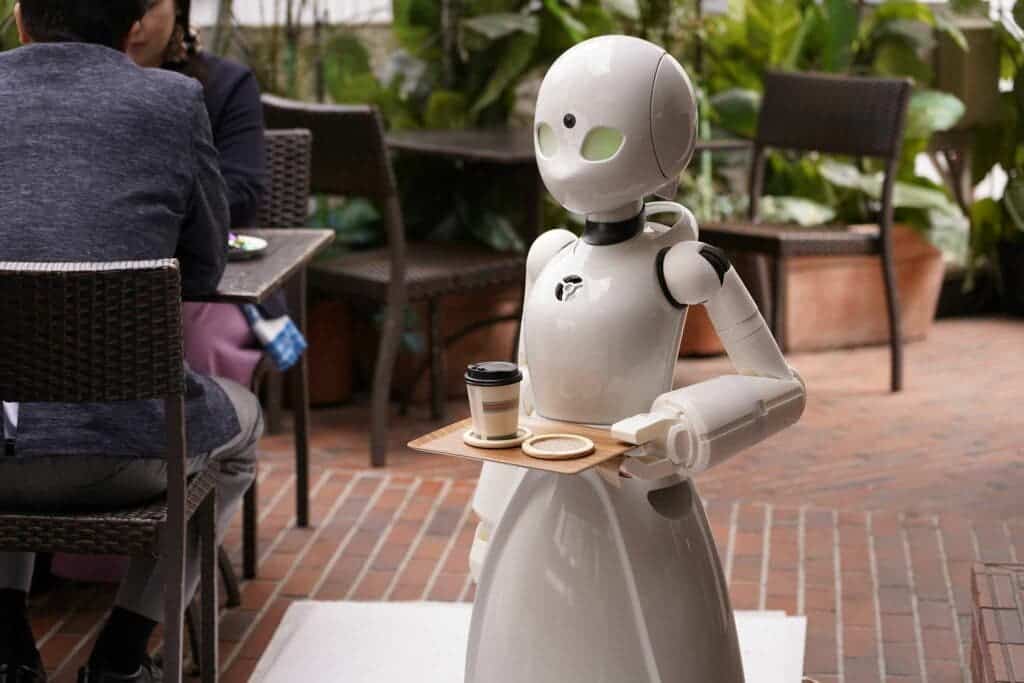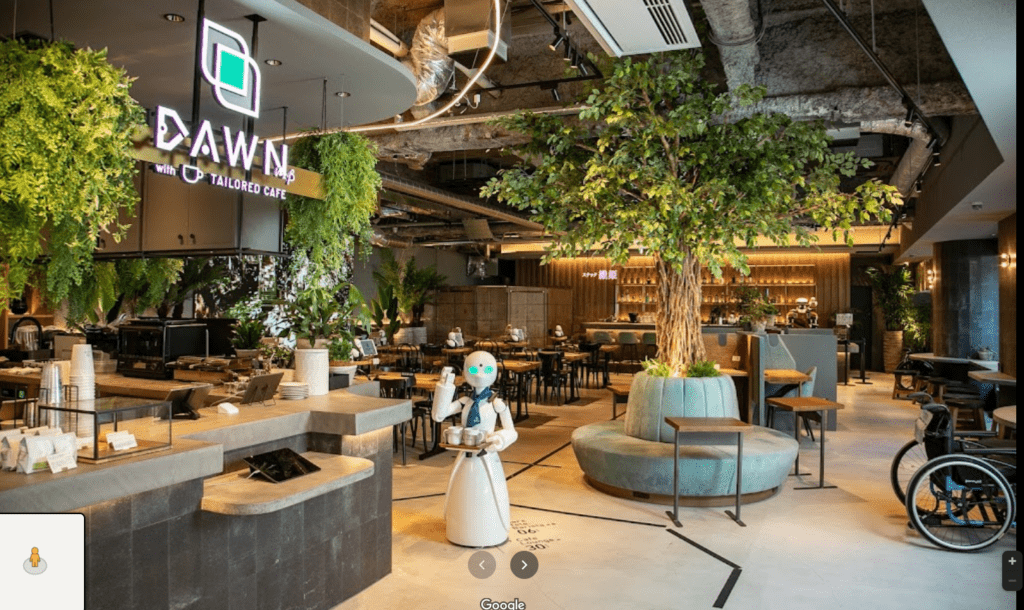In Japan, as in most other countries, disabled people are often invisible, hidden away in a homogeneous society that prioritizes productivity and fitting in. While the country has made some progress, issuing new anti-discrimination laws and ratifying a UN rights treaty, the issue is far from solved. Now, a cafe in Tokyo hopes to make a difference, bringing together technology and inclusion in a unique type of café.

DAWN, or Diverse Avatar Working Network, is a café managed by robots operated remotely by people with physical disabilities such as Amyotrophic Lateral Sclerosis (ALS) and Spinal Muscular Atrophy (SMA). The operators, referred as pilots, can control the robots from home, using a mouse, tablet or gaze-controlled remote.
The cafe is the latest project of the Japanese robotics company Ory Laboratory, which has the overall purpose of creating an accessible society. Its co-founder and CEO Kentaro Yoshifuji got the idea of a cafe with remote-controlled robots after spending a long time in hospital when he was a child – unable to go to school for over three years.
The project started in 2018 as a pilot and has changed three times ever since. Following positive feedback from customers, Ory Laboratory opened a permanent café in Tokyo’s Nihonbashi district in June this year. The researchers behind the robot, Kazuaki Takeuchi, and Yoichi Yamazaki, even published paper last year describing how the robots were developed and how they can be used.
The robots are called OriHime-D. Users can remotely control them as their real avatars, that is, an alter ego with body by selecting prepared patterned motions. In addition, the user can communicate with real speech sound and speech synthesis. This enables communication for persons with difficulty speaking unable to engage in physical work. The researchers behind the project emphasize that the more abstract and vague the robot shape is, the more the user’s personality can show up.
A unique coffee shop

The café in Tokyo has several types of OriHime robots, which have been used previously when it was all only a pilot project. There’s one table top-stationary robot that takes order from customers, capable of taking on different poses. Tables at the café also come with an iPad to support the interaction with the robots, operated by pilots remotely.
Pilots, wherever they are based, can watch the customers through their computer screens while moving the robots around the café with a software that can be operated with slight eye movements. The OriHime are about 1.20 centimeters tall and come with a camera, microphone and speaker, which they use to speak and take orders in a space.
There’s also a larger robot that is used to bring food to the customers. This provides opportunities for people who face difficulties in chatting with customers. At the same time, instead of having baristas, the cafe comes with a “TeleBarista OriHime” with automatically brews any coffee selected by customers and is then taken to the table.
The café is a joint effort between Ory Laboratory, All Nippon Airways (ANA), the Nippon Foundation, and the Avatar Robotic Consultative Association (ARCA). Each operator gets paid 1,000 yen ($8.80) an hour, which is the standard wage in Japan. As well as working with the cafe, Ory’s robots can also be found in transportations and department stores.
If you’re in Tokyo and would like to have a cup of coffee at Dawn, here’s how you can find it:






